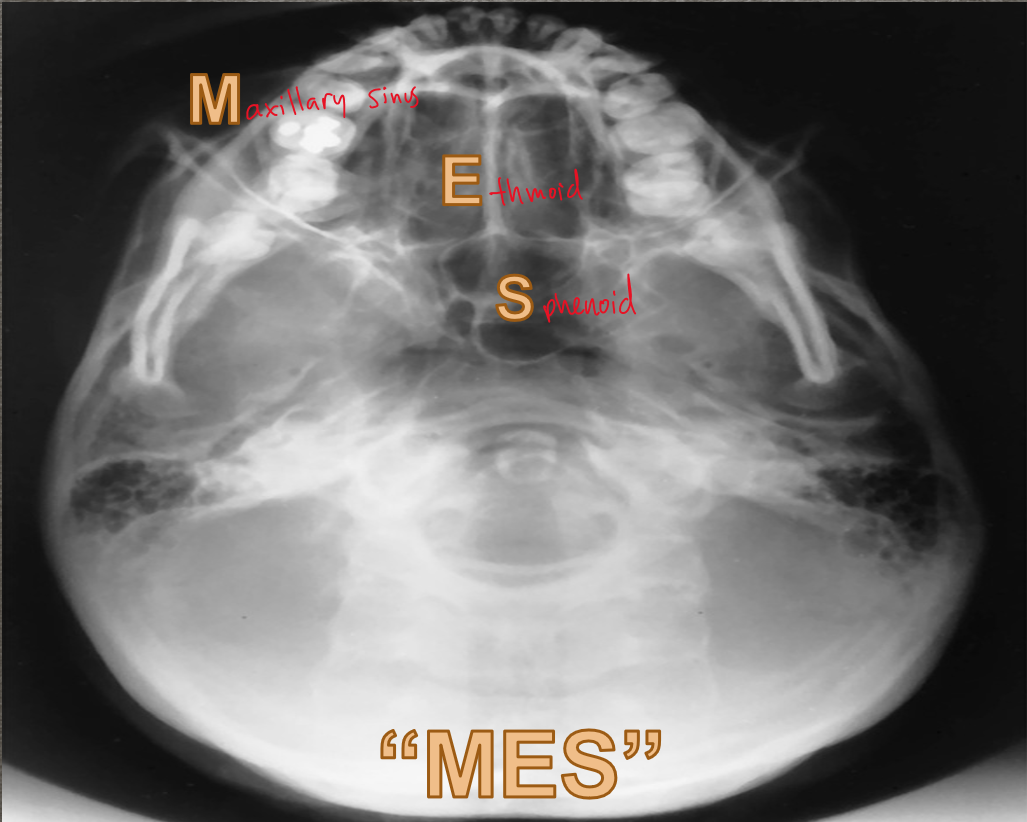Positioning 2: Skull
1/33
There's no tags or description
Looks like no tags are added yet.
Name | Mastery | Learn | Test | Matching | Spaced |
|---|
No study sessions yet.
34 Terms
What are the 3 types of Skull Morphology?
Brachycephalic
Mesocephalic
Dolichocephalic
MESOCEPHALIC PETROUS PYRAMIDS PROJECT ANTERIORLY AND MEDIALLY at what angle from MSP?
47 DEGREES
BRACHYCEPHALIC PETROUS PYRAMIDS PROJECT ANTERIORLY AND MEDIALLY at what angle from MSP?
54 DEGREES
DOLICHOCEPHALIC PETROUS PYRAMIDS PROJECT ANTERIORLY AND MEDIALLY at what angle from MSP?
40 DEGREES
How many Cranial and Facial bones?
8 Cranial bones
14 Facial bones
What are the 8 cranial bones?
Frontal bone.
Parietal bones (there are two)
Temporal bones (there are two)
Occipital bone.
Sphenoid bone.
Ethmoid bone.
What are the Three parts of the Temporal Bone?
Squamous
Petrous
Mastoid
Sphenoid looks like a:
bat
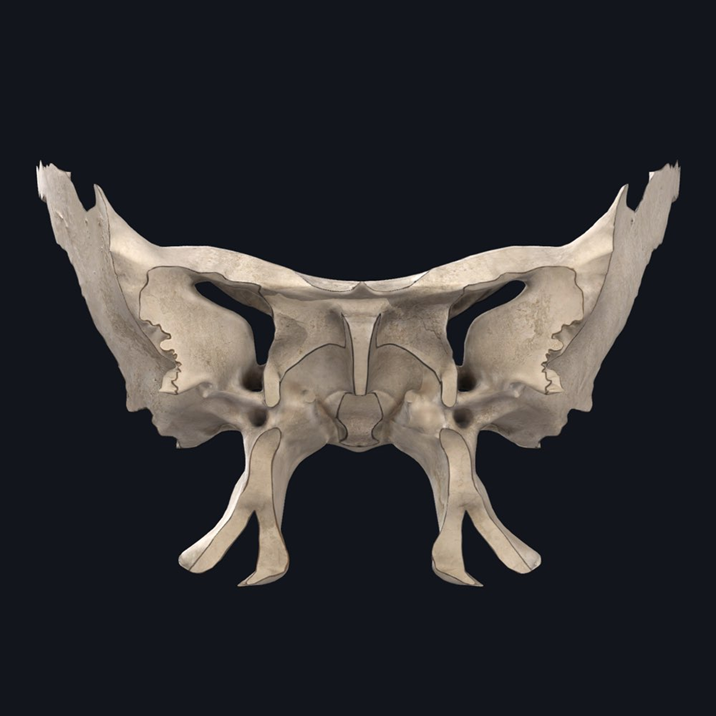
This bone has a Crista galli and Cribriform plate
Ethmoid
joints that are essentially immovable, also known as:
Synarthrodial
As a baby it’s known as the “soft spot”
Bregma
What are the adult Skull Sutures?
coronal
sagittal
lambdoidal
squamosal
a space between the bones of the skull in an infant or fetus, where ossification is not complete and the sutures not fully formed
Fontanels
Posterior fontanel is called:
Lambda
Identify the four bones that make up the skullcap of the cranium called the Calvaria
Frontal
Right parietal
Left parietal
Occipital
Skull Technique
75 kVp
20 mAs
What are the Special Skull Views?
SMV (submentovertex)
HAAS (another alternative to AP Towne)
AP Axial Skull: Towne method
OML perp to IR. CR = __ degrees (double chin)
30
caudal
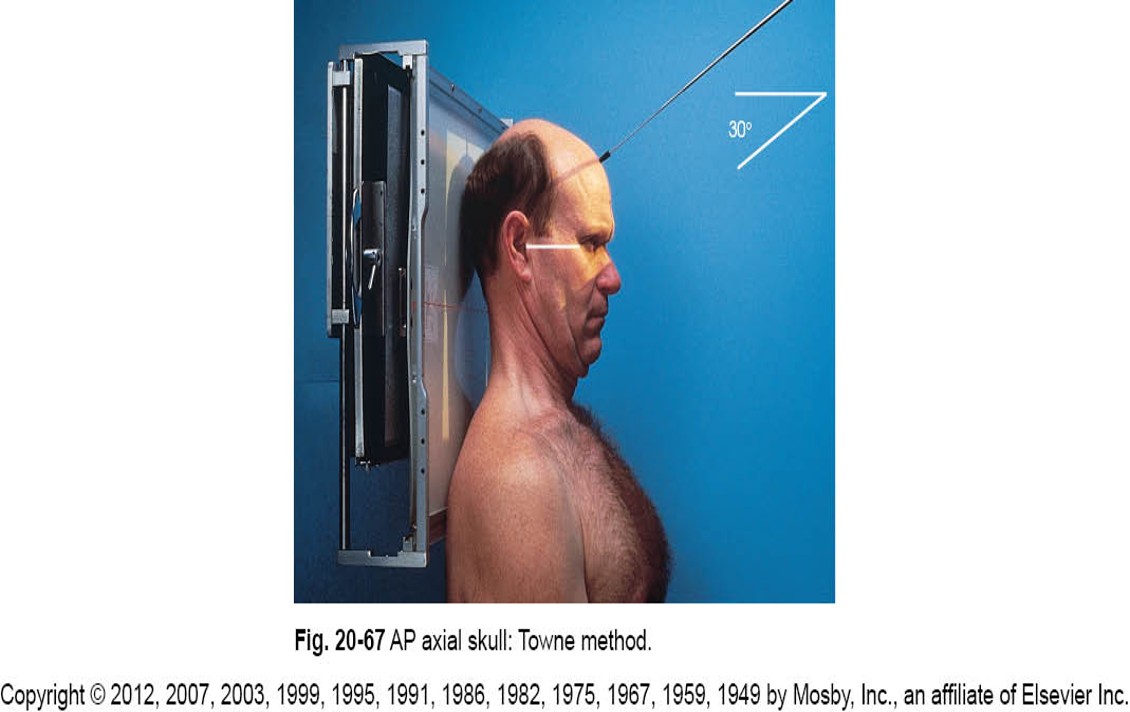
AP Axial Skull: Towne method
IOML perp to IR. CR = __ degrees
37
caudal
AP Axial Skull: Towne method
CR: MSP
2.5 inches above glabella
AP Axial Skull: Towne method
IR size and orientation:
10 X 12 Lengthwise
Lateral Skull
What overlaps ?
Pituitary Gland overlaps Sella Turcica
Lateral Skull
CR:
What is perpendicular?
2 inches superior to EAM
Interpupillary is perpendicular
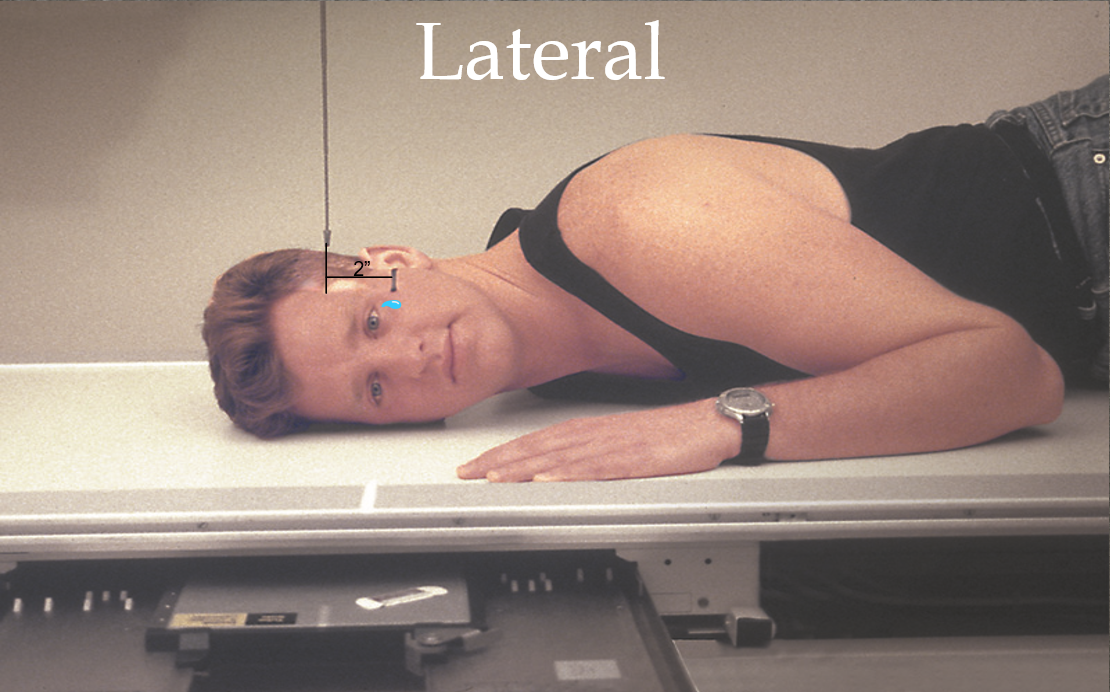
Lateral Skull
Lateral sees all
Sinus Cavities
Lateral Skull
IR Size and Orientation
10 X 12 Crosswise
PA
Exit point:
At Glabella. Put Glabella on IR Center
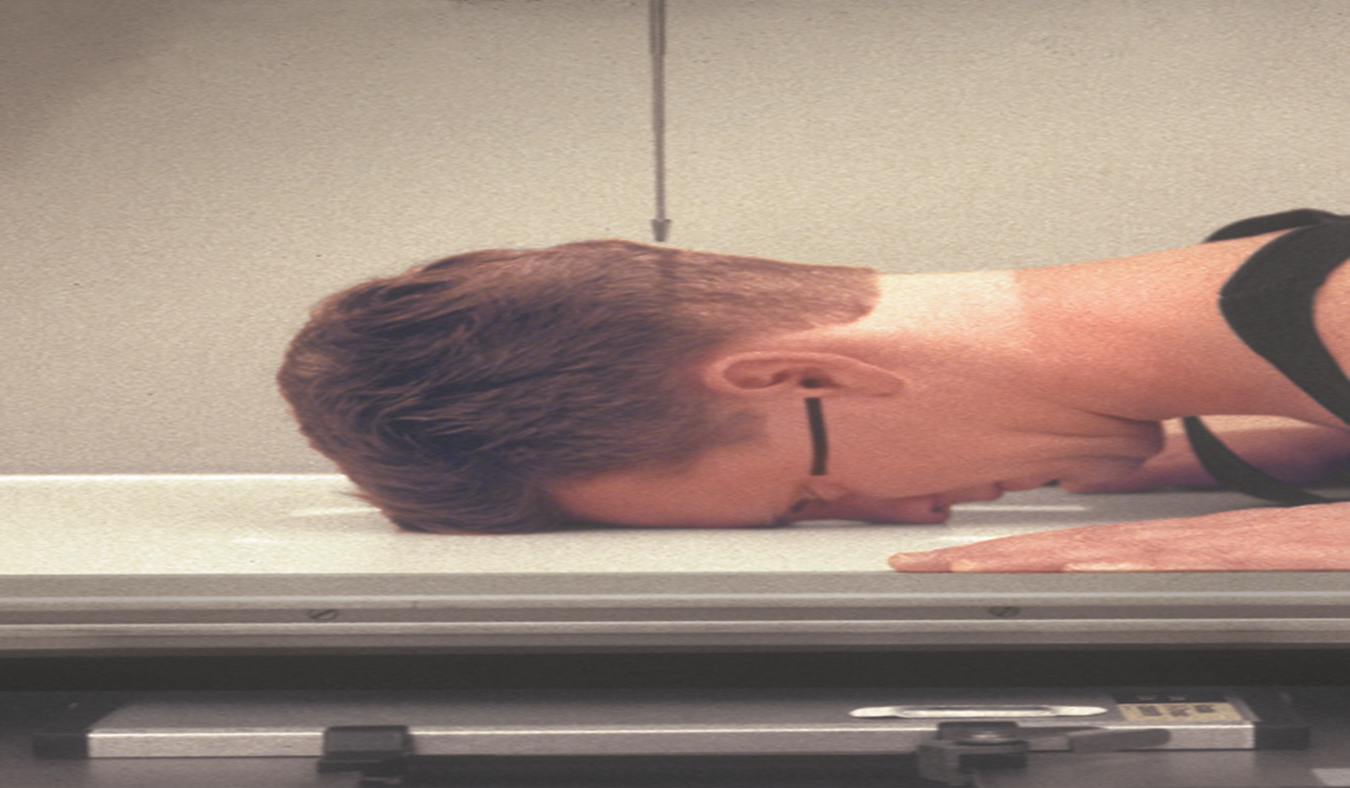
CALDWELL
OML is
CR(angle):
exits the:
Perpendicular to IR
15 degrees Caudal
Nasion
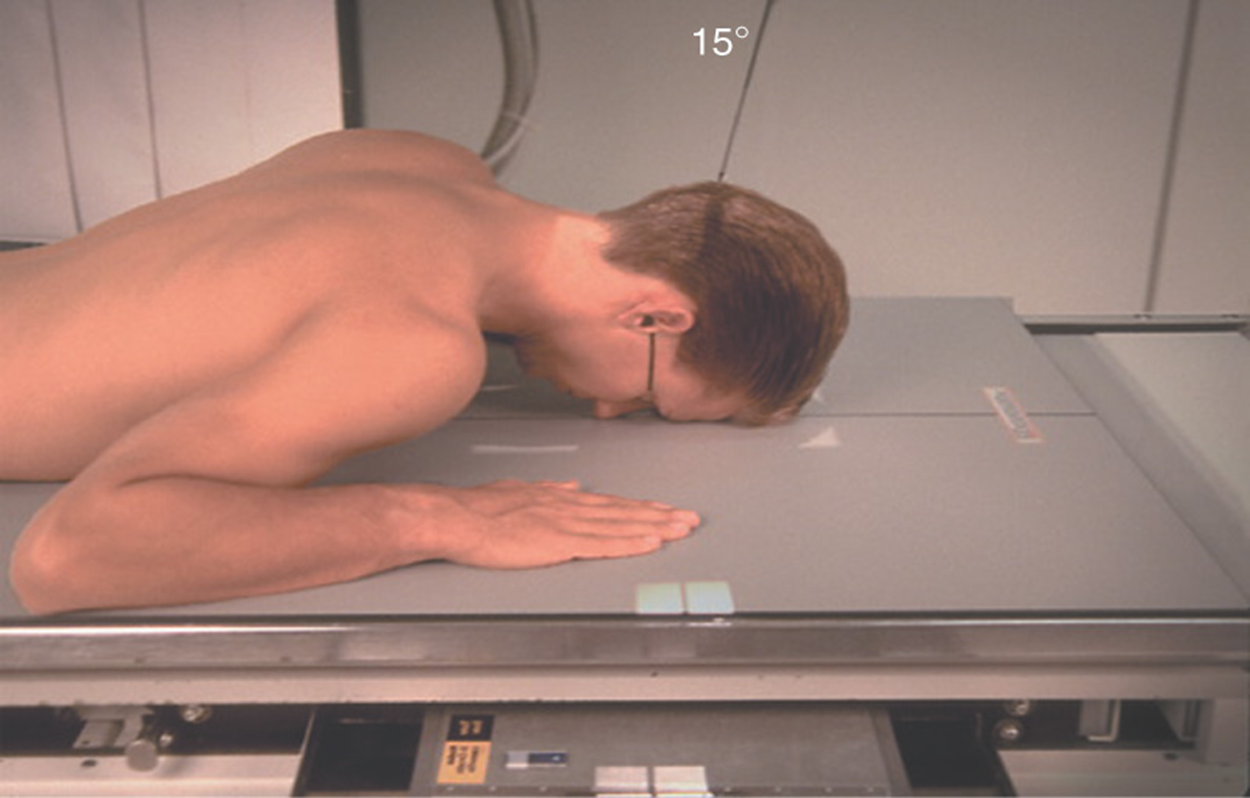
Waters
Petrous ridges sit at(degrees):
37 degrees
Waters
MML is:
OML forms a ___ angle
CR exits the:
Perpendicular
37 degree
acanthion
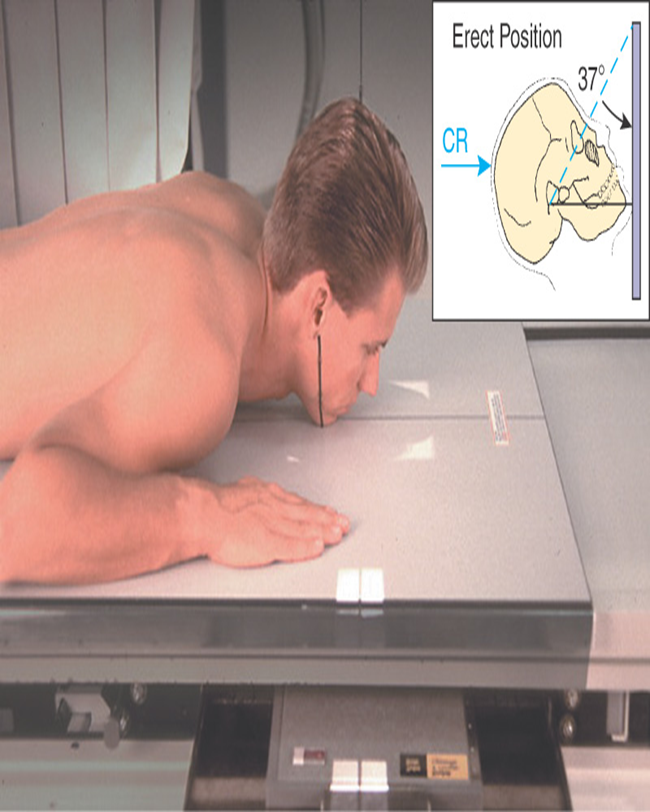
Waters
Where are the Petrous Ridges?
Petrous
Ridges
Under
Maxillary
Sinus
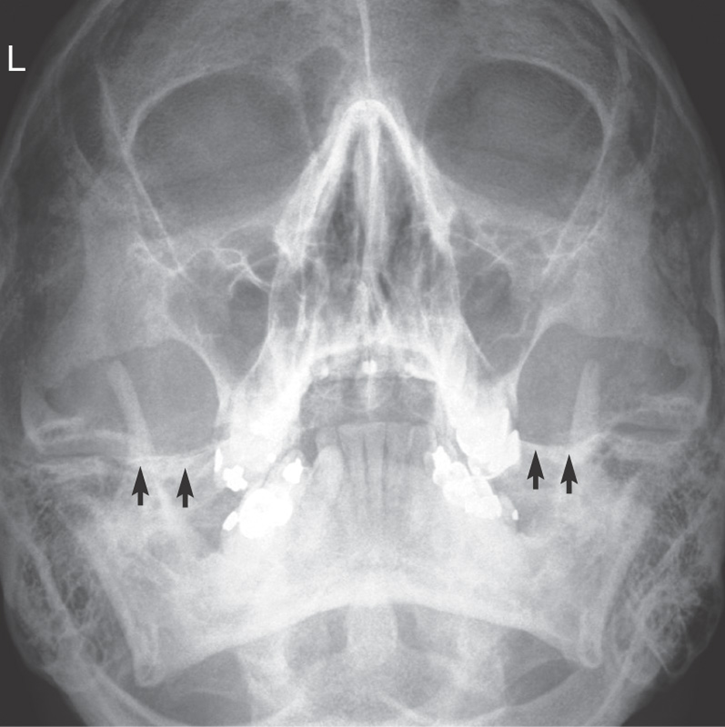
SUBMENTOVERTEX
IOML:
Parallel to IR &
Perpendicular to BEAM
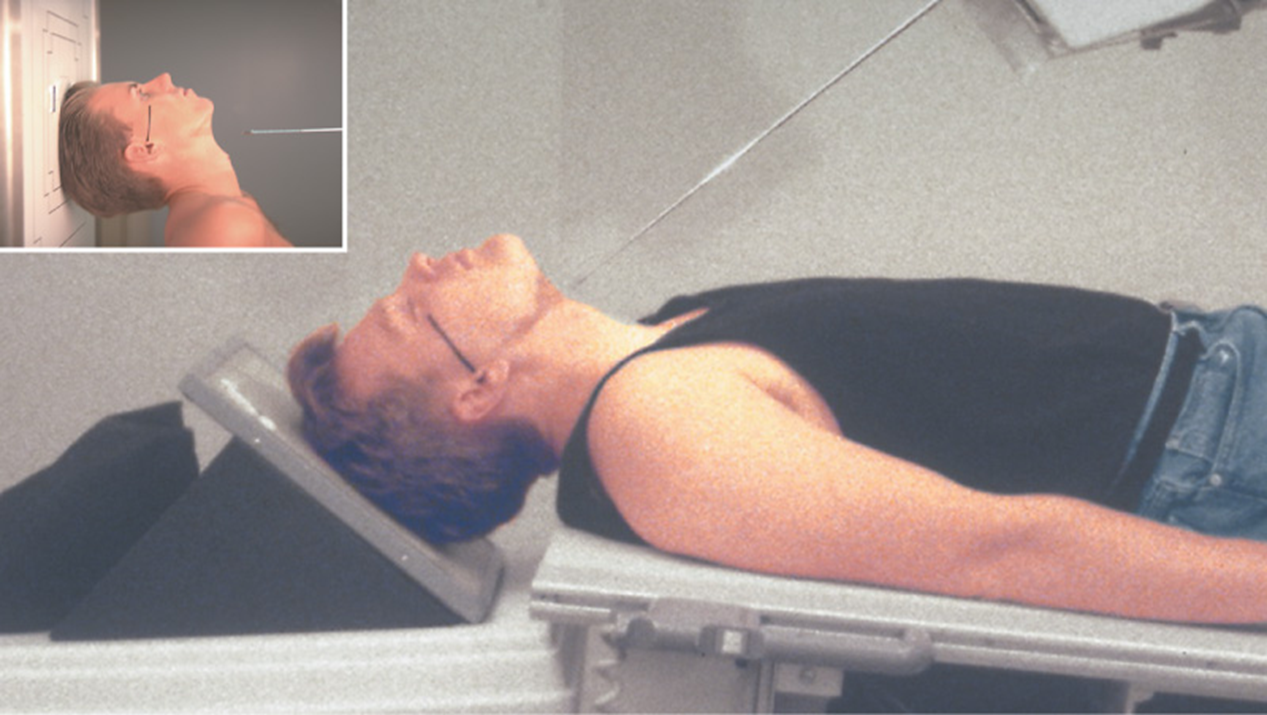
SUBMENTOVERTEX
CR center:
Center between GONION and MANDIBLE
SUBMENTOVERTEX
Your angle is dependent on patient:
Neck Flexion
SUBMENTOVERTEX
What does “MES” stand for?
Maxillary Sinus
Ethmoid
Sphenoid
